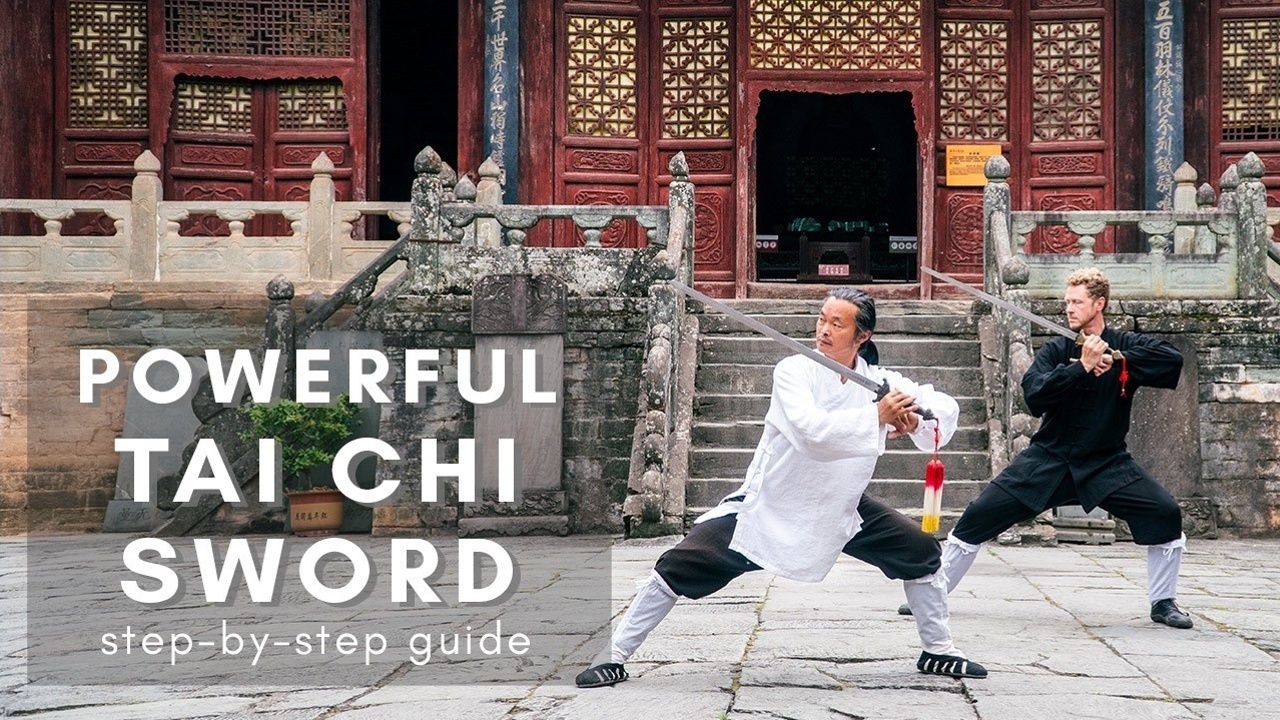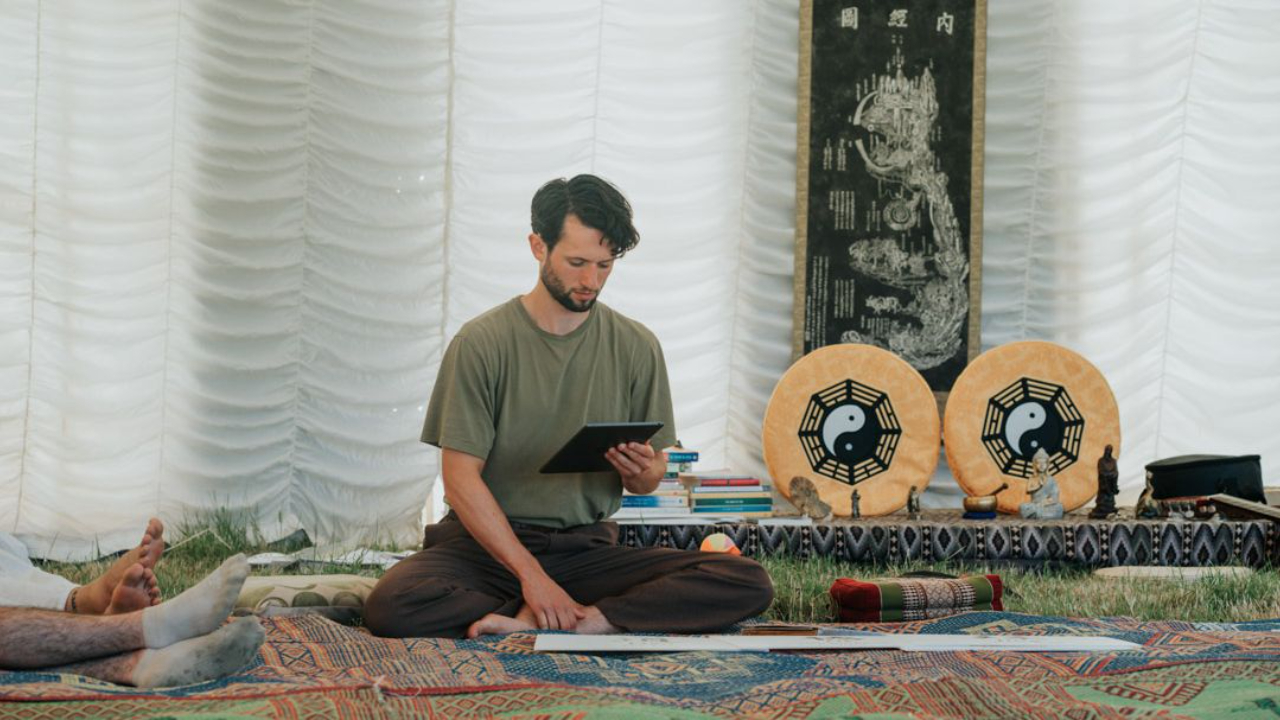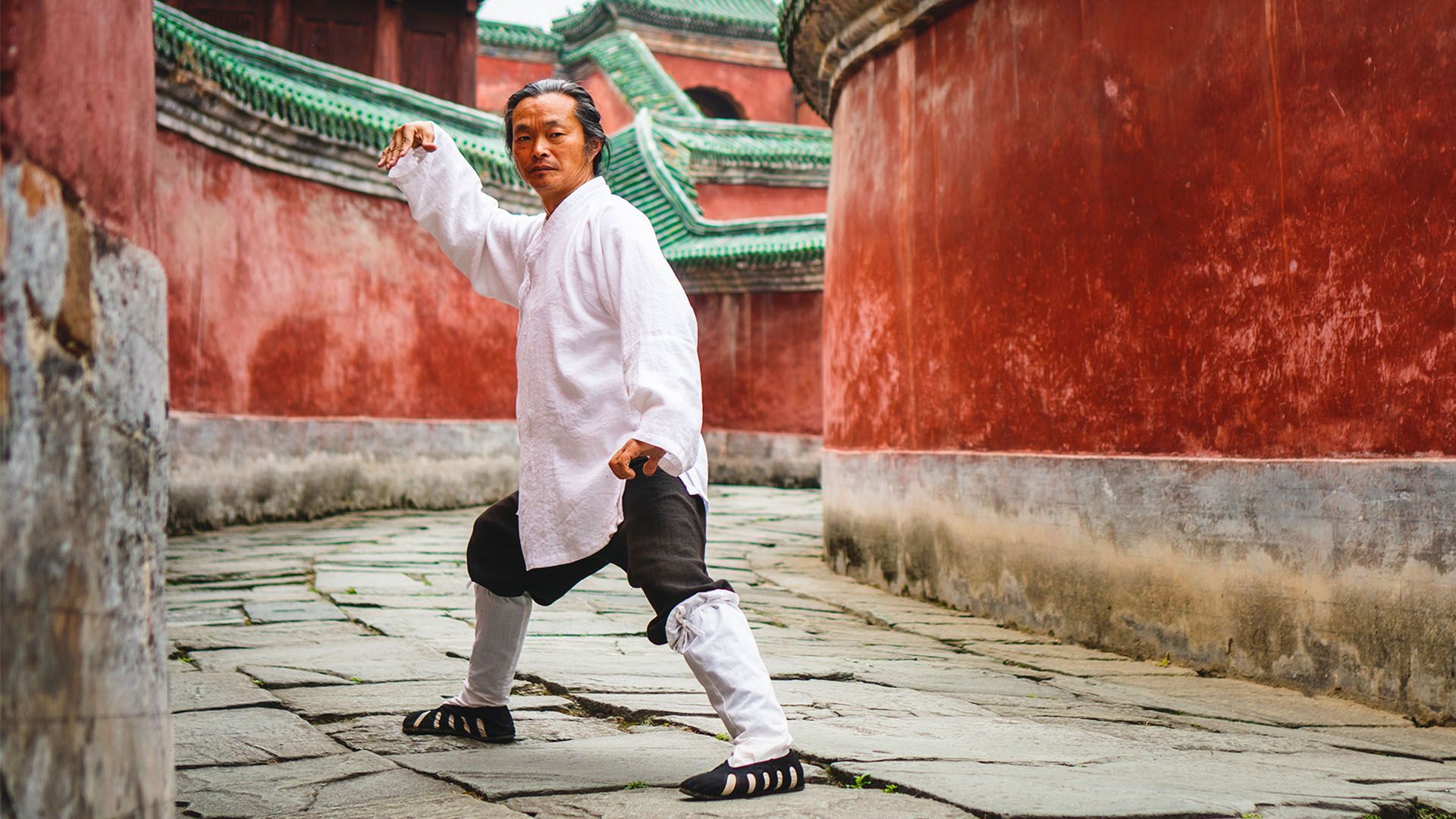Tai Chi Sword (Jian) – In-Depth Guide
Oct 07, 2024
I had been a student with Master Gu for several months when he decided he would teach me something new.
We had been practicing various tàijíquán (bare-hand Tai Chi) forms, in a natural progression of difficulty. Daily practice, two hours in the morning, two in the afternoon, six days a week. Wudang 8 Form, 33 Form, 28 Form, 13 Form, and several Qi Gong Forms, too...
The next step, Master Gu explained, was to start learning tàijjiàn: Tai Chi Sword!
This was something I had been looking forward to from when I’d first visited the WTWA website and watched George’s videos. As a boy, I loved playing a knight, or Zorro, or a pirate—I had even studied fencing for a while, so the prospect of learning to wield a sword in China was exhilarating.
If you, too, like the idea of learning about how something as exciting, dangerous, and evocative as a sword combines with powerful, peaceful, and beautiful Tai Chi, join me in this introduction to Tai Chi Sword!
Can you use weapons and be a Taoist?
As you may know, the fundamental text of Taoism, the Tao Te Ching by Laozi, actually warns against the use of weaponry. They are only to be used to deter war, not wage war.
In chapter 31, Laozi writes:
“Good weapons are instruments of fear; all creatures hate them. Therefore, followers of the Tao never use them. The wise prefer the left. Soldiers prefer the right.”
The message is clear: peace is the way of the wise. Traditionally, the right hand is the sword-carrying one. This is why in the martial arts greeting, the left-hand covers the right, to indicate peaceful intentions.
In chapter 53, too, it is stated plainly that those who
“carry sharp swords…are robber barons. This is certainly not the way of Tao.”
And:
“The sharper men’s weapons, the more trouble in the land,”
Laozi says in chapter 57, while in chapter 69 he lauds the principle of “being armed without weapons”.
Zhuangzi, too, in his instructive story of ‘The Delight in the Sword-fight’ manages to defeat King Wen of Zhao’s carefully selected sword-fighters without ever picking up a blade. While claiming to be an expert swordsman, all Zhuangzi does is talk about swords, until King Wen understands that swords are not the way, or indeed the Way.
For this reason, there are those who believe that Tai Chi forms that utilize weapons are not in keeping with the Tao. However, if we consider the weapons forms in their historical and cultural context, a more nuanced picture arises.
From everyday objects to instruments of self-defence
Hermits and monks who led isolated lives in forests and mountain caves were, from time to time, confronted not only with wild animals but also with roaming bands of robbers and thieves. As Master Gu likes to put it:
“Man is the output of nature as well as the output of culture.”
So yes, while it is in the nature of the Taoist to yield, the hermits, monks and priests nevertheless learned to use certain tools that they carried anyway to make attackers reconsider their eagerness to engage. These ranged from kitchen utensils to walking sticks and gardening tools but also included more imaginative instruments.
The 拂尘 fúchén or horsetail whisk, for instance, was designed to swat at flies and remove cobwebs from one’s path. As it turned out, it could also be used to defend oneself, without actually inflicting fatal injuries.

The 拂尘 fúchén: horsetail whisk
The 棍 gùn, which simply means “rod” or “stick”, was a convenient walking cane to support monks clambering over treacherous rocky trails. It also works to keep a wild boar at bay—or a disrespectful bandit, if needs be.

George spinning his 棍 gùn
The 剑 jiàn or straight sword, is indeed a tool designed for armed combat. To Taoists, however, it carries another, more symbolic, and more important meaning. When a disciple became a priest, his master would give him a sword to cut off the connections to their former lives in the material world. The sword, then, is used in Taoism to defeat such inner demons as negative distractions, harmful emotions.
How can a sword help us live long and live well?
One of the aims of practicing Tai Chi is to promote health, wellbeing, and longevity. How can a sword help with this?
In a Tai Chi Sword Form, the jìan is to become an extension of the body. First and foremost, this is true for the hand that holds the sword, but in a larger sense, as you will notice, the added length and weight will affect your balance, speed, and even breathing.
As such, the addition of a weapon to the body invites the practitioner to adapt, by accepting the weapon as a part of the physique. In this way, the weapon becomes not an obstacle but a method of living the Taoist principle of being like water: adapt and adjust.

A traditional Tai Chi practice sword: unsheathed, it becomes an extension of the body
This swordplay, as the Chinese phrase has it, makes us stronger and healthier in other ways, too.
The different balance, the added weight, the shifting of that weight: all of these affect the flow of our Qi and can accomplish a wholesome massage for our internal organs. Practising with a sword also renders more supple our muscles, tendons, and ligaments. The heart and lungs have to work harder as well. Altogether, you will find that the Tai Chi sword is a full-body and cardiovascular workout!
In short, we practice weapons forms, not to engage in fights but to improve our health, honour tradition, and, let’s not forget, to enjoy the intrinsic beauty of the forms.
The beauty of the sword form
The practice swords that are used in Tai Chi are either made of wood or unsharpened, thin, flexible steel: safe for everyone involved, whether practitioner or bystander. The thinness of the blade helps to experience the wave-like patterns of the form; the Qi that makes it vibrate upon thrusting the sword forward is quite a sight to behold!
Moreover, the martial element of Tai Chi is expressed more visibly in the sword form, simply because of the presence of the weapon. This, combined with the control and presence that the practitioner displays throughout the form, lends an undeniable beauty to the performance.

Taoist cultivation: learn to overcome the hard with the soft
In learning a sword form, there is one more quality of water that you will experience:
“Soft and weak overcome hard and strong.” (Tao Te Ching, chapter 36)
Soft water can polish, erode, and even boreholes in the hardest rock. What does this mean in relation to Tai Chi Sword?
The interplay between hard and soft in life is reflected in many aspects of Tai Chi. Instead, we make our bodies soft and supple. When we stand, we are grounded in the earth with solidity; when we move, we float as light as clouds and flow as effortlessly as a stream.
Tense muscles, as you know, are counterproductive when practicing Tai Chi. If we were to make our body hard, we would sooner trip and fall than float or flow! Qi, energy, comes towards a Tai Chi practitioner from heaven, earth, and man (for example, an opponent). This energy is either to be absorbed and returned or to be allowed to blow past while we yield flexibly to let it through. None of this works with hardness
“To cleave to the soft is strength.” (Tao Te Ching, chapter 52)
It is therefore essential that we overcome an opponent’s force by being soft and relaxed. Paradoxically, the addition of the hard, cold steel of the sword to our body will help us become better at exactly that.
Integrating The Sword Into Tai Chi
Incorporating the sword into Yang-style Taiji practice offers numerous benefits for longevity and wellness. This Chinese martial art combines graceful movements with a philosophy that emphasizes balance and harmony. The sword technique, an extension of the body, enhances focus and coordination. Practicing this form of Taiji, which includes elements of Qigong, promotes mental clarity and physical health. Regular practice can lead to improved posture, increased flexibility, and a stronger immune system. By integrating the sword into Taiji, practitioners can experience a unique blend of martial skill and meditative tranquility, contributing to a longer, healthier life.
Lead the sword in soft yet powerful circles
For this reason, tàijíjiàn or Tai Chi Sword is not about using muscle strength to deliver blows. Instead, it makes clear that the natural movements we make have all the strength we need to swing the sword wherever we want it to go. As always, these movements are typically circular in shape—an acknowledgement of the natural power of the feminine, of the mother.
Sanfeng 64 Sword Form, the main sword form in the Wudang Tai Chi style, sees us speed up and slow down, turn 180 degrees and pause while standing on one leg. In other words, the rhythm of the form, too, facilitates guiding the sword.
Simply put, we just move our body and our limbs in the Tai Chi way: the natural way. Soft and relaxed. The sword, as a part of the body, goes wherever we and our hands go. The hard cleaves to the soft, so to speak.
In this way, we learn various key Taoist principles: to adapt and to let the soft overcome the hard. We learn these by experiencing them physically, by embodying them. And once your body knows it, you know it—forever!
The Dynamics of Intention, Qi, And The Body
As a Tai Chi practitioner, you may be familiar with this principle:
以意领气 yǐ yì lǐng qì
以气领形 yǐ qì lǐng xíng
In translation: “The intention leads the Qi; the Qi leads the body.”
This is why, in Tai Chi practice, how and where our eyes look matters. The eyes observe and anticipate, then look at where we want to go. From the eyes, the Qi is led through the meridians to the limbs that we need to move in order to reach the intended position. And so the body moves.
Awareness of our own body, therefore, is as important as awareness of our opponent and our surroundings. This is why we want to be quiet and empty inside so that we can receive whatever comes from outside of us.
As you know, Tai Chi practices and enhances this physical awareness. Now add a sword to the equation. That would be quite a task if it weren’t for what we have discussed above: the sword becomes part of the body. Thus the 意 yì, the intention, is expanded to include the sword. Similarly, the Qi flows along and through the arm into the hand and into the sword, all the way to the point, and out, and in. Just like it would without the sword.
Visualize this when practicing; feel it, feel the Qi, and feel the sword. Feel how the Qi goes through the sword.
Sword Fingers: What to do with the hand not holding the sword?
As for the hand that does not hold the sword—in most of the form, this will be the left—this has a special task and significance, too.
The index and middle fingers are stretched out while the other fingers curl into an open half-fist, with the thumb tip on the outside of the ring finger (and pinkie, depending on the size of your hand and thumb).

The left-hand serves many purposes when doing the sword form. It helps point the attention to where we want to go, like sights on a ballistic weapon. It guides the right hand when it connects with the right wrist, creating a closed-loop of Qi. It distracts the opponent.
It can be used to jab at the eyes or throat, although it is rarely pointed like that. Usually, upon (imagined) contact, the side of the straight but relaxed middle finger functions rather to ward off an incoming attack, to guide the opponent’s Qi in the desired direction. Indeed, primarily, the left hand with its “sword fingers” does exactly that: it guides and leads the Qi.
How to Get Practising!
When you have seen Master Gu demonstrate Sanfeng 64 Sword Form, you will no doubt be overcome with emotion: touched by the beauty, awed by the control, and enchanted by the choreography. Most of all, we trust, eager to go and learn it yourself! Sword Form Video
Here are some practical pointers to help you get started.
1. Make sure you choose a sword that is the right size for you:
You can use this table as a reference:

2. Find space:
Within, as always, but here we also mean practically speaking, find physical training space. This form will take you from right to left and back, to and fro, in all directions and quite a few steps in those at that. Another kind of space that you will need is a safe space: somewhere where you are allowed to practice with a sword and can do so without frightening any unsuspecting passers-by. As ever, be mindful of your surroundings.
3. Ground yourself before starting:
Now take that enthusiasm, embrace it and then breathe out. Calm and ground yourself. You are going to take up a sword. Feel its heft, its solidity, its cool. Yes, this is a weapon. It is important that you realize that and take time on a regular basis to get close to it and allow it to get close to you.
4. Get familiar with your sword:
Try it in both hands, swing it slowly in full circles where you have ample room to practice. When you feel you are ready, speed the circles up, just by moving your arm in a relaxed, natural fashion. Watch how the sword moves. Be aware of how far the pointed tip of its blade reaches. Notice how it increases your own reach. Again, if and when you feel ready, throw the sword calmly from hand to hand, feel how your hand catches and clutches the grip, how the guard bumps into your flesh. In short, know your sword and become one with it.
This is an important part of the practice.
5. Choose a form to study:
Of course, you will want to learn a real, traditional Tai Chi Sword form. For this reason, Master Gu teaches the form as composed by Grandmaster Zhang Sanfeng, which is called Wudang Sanfeng 64 Sword Form. We have a separate blog post introducing just this form. As a student of the Online WTWA, this form is included.
6. Find pleasure in mastering the details:
Spend time with each move and each position before you proceed to the next. By this we mean, watch, really study, how Master Gu does a position. Look at the details of the hands and feet, of the look in the eyes. Is the sword level with the ground? Where does the point…point? Is it held vertically, cutting edges down and up, or horizontally, flat? When you swing it, follow the entirety of the arc precisely. From where to where at what plane?
The beauty of this form lies in its precision. Enjoy getting all the details right.
7. Become aware of the effect on your body:
As you are practising the sword form, be conscious of how the sword affects your body and your energy. Do you feel what it does with your muscles, joints, breathing, organs? With the flow of your Qi? You may very well notice that you are expending more Qi than in the Tai Chi you have been doing without a weapon. Therefore, also:
8. When you get tired, rest:
You will notice that manipulating a sword takes something out of you, more than when you practice tàijíjquàn. You will also notice that this grows easier as you and the sword get used to one another. Practice your Qi Gong forms to recover and replenish your Qi. After yin, you will be ready for some more powerful, peaceful, and beautiful Tai Chi Sword!

Eli happy with his sword
---
Eli Roovers, Taoist name: 丹宁资和
16th-generation Sanfeng Pai disciple and Taoist Wellness Instructor
How to learn Taiji Sword with Master Gu Online
If you would like to learn how to overcome the hard with the soft and increase your life energy with Master Gu, you are warmly invited to join the Online Wudang Taoist Wellness Academy. The academy is designed to help you live long and live well. It teaches Tai Chi, Qi Gong, and Taoist philosophy from the Wudang Mountains, China.
In year 2 online academy students get in-depth tuition of the Sanfeng 64 Sword Form. You also can learn:
- A powerful morning meridian adjustment Qi Gong
- How to stand strong like a tree.
- Linguistically guided Qi Gong meditations
- In-depth Step-by-step tuitition of 8, 13, 28, 33 Wudang Taiji forms
- Step-by-step tuition of 5 animal Qi Gong, Six-healing sound Qi Gong and Ba Duan Jin Qi Gong.
- Taoist philosophy lectures
- +more!
Students also get to join Master Gu for a live Zoom Q&A every month to ask their questions. If you are interested in becoming a student, click here to learn more!









